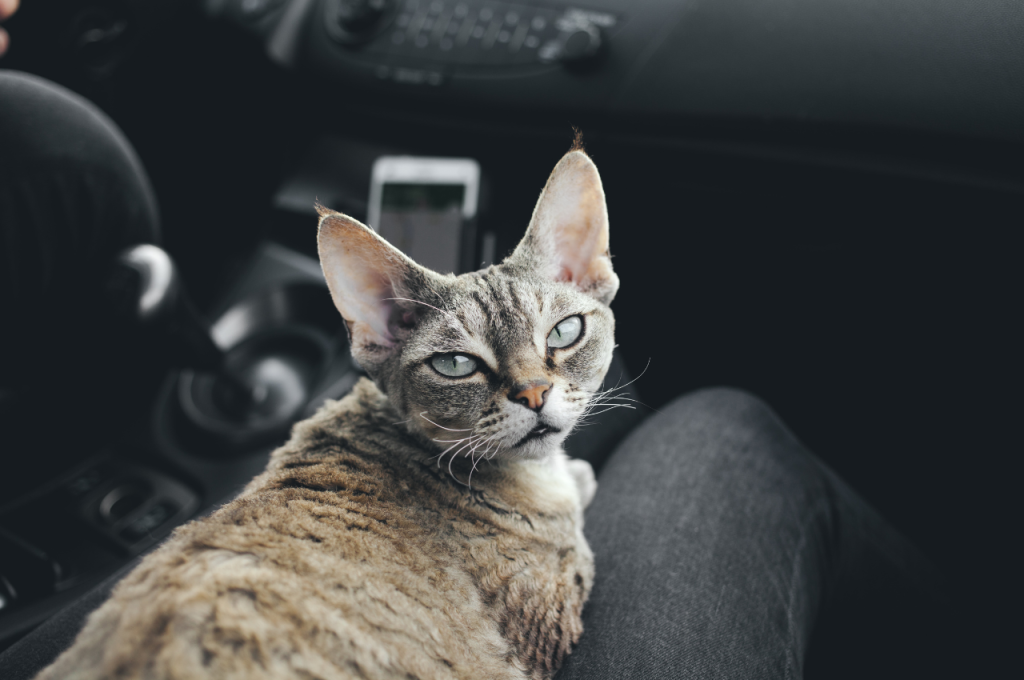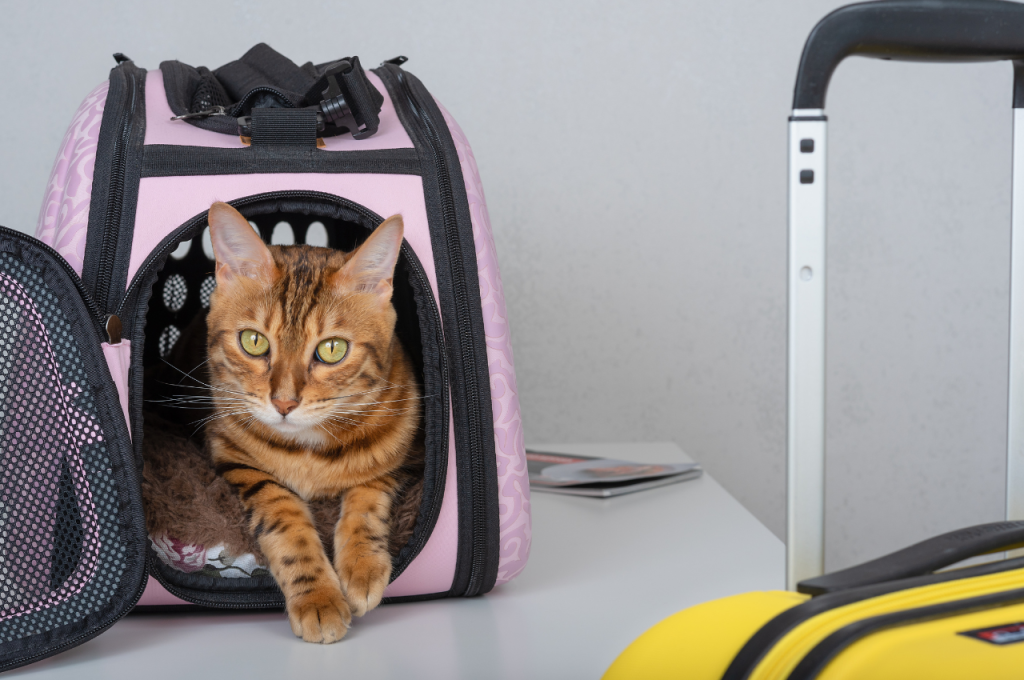To travel with a cat in a car, ensure a secure carrier is used, provide comfort with familiar items, and make frequent stops for bathroom breaks and reassurance.
Traveling with cats can be a challenging experience, but with proper preparation and some helpful tips, it can be made easier for both you and your feline companion. Whether you’re taking a short trip to the vet or embarking on a long-distance journey, it’s important to prioritize your cat’s safety, comfort, and well-being. In this blog post, we will discuss the necessary steps to ensure a smooth and stress-free car travel experience with your beloved cat.
Preparing Your Feline Friend for The Journey
Traveling with a cat in a car can be a stress-free experience with the right preparation. When it comes to preparing your feline friend for the journey, taking the time to acclimate them to the car and ensuring they are comfortable in their carrier is essential. This will help minimize anxiety and make the travel experience enjoyable for both you and your cat.

Familiarizing Your Cat with The Car
Start by getting your cat accustomed to the car environment before the travel day. Place your cat in the stationary car for short periods, gradually increasing the duration. Allow them to explore the space and become familiar with the sights, sounds, and smells of the vehicle. This gradual exposure can help reduce their anxiety when it’s time to hit the road.
Choosing The Right Carrier
Invest in a carrier that provides a secure and comfortable space for your cat during the journey. Select a carrier that is well-ventilated, spacious enough for your cat to stand and turn around, and equipped with a secure door. Line the carrier with a familiar blanket or bedding to provide a sense of comfort and security for your feline companion.
Safety First: Secure Your Cat in The Vehicle
When traveling with your cat in a car, safety should be your top priority. Ensuring that your feline friend is secure and comfortable during the journey is essential for a stress-free trip. Here are some tips to help you keep your cat safe and secure while traveling in a vehicle.
Proper Carrier Placement
Place the cat carrier on the back seat of the car, preferably in the middle, to minimize the impact of sudden stops or turns. Ensure that the carrier is secured and does not move around during the journey. Placing the carrier on the seat prevents the cat from being thrown around in case of a sudden stop.
Using Cat Harnesses and Seat Belts
Consider using a harness specifically designed for cats, along with a seat belt, to secure your cat during car rides. This provides an added layer of safety, preventing your cat from moving around the vehicle and minimizing the risk of injury in the event of an accident. Make sure the harness fits properly and is comfortable for your cat.
Creating a Comfortable Environment Inside The Car
Creating a comfortable environment inside the car for your feline friend is crucial for a stress-free journey. Cats can be sensitive to changes in their surroundings, so it’s important to take steps to ensure they feel secure and at ease during the car ride.
Controlling The Temperature
Maintain a comfortable temperature inside the car to keep your cat content. Avoid extreme heat or cold as it can cause discomfort and anxiety. Use the air conditioning or open windows to regulate the temperature. Monitor your cat for any signs of overheating or shivering.
Minimizing Noise and Distractions
Reduce external noise by playing soothing music at a low volume. Keep the environment calm and minimize sudden movements. Use window shades to block out excessive light and reduce visual stimuli. Secure your cat in a carrier to prevent distractions and ensure their safety.
Managing Feeding and Hydration on The Road
Ensure your cat stays hydrated and fed while traveling by offering water and snacks at regular intervals. Use spill-proof bowls and familiar food to keep your feline friend comfortable and content during the journey.
Managing Feeding and Hydration on the Road is crucial for ensuring your cat stays healthy and happy during travel. Timing Your Cat’s Meals is important to avoid any potential accidents and to keep your cat’s digestion on track. Keep in mind that cats are creatures of habit, so try to stick to their regular feeding schedule as much as possible. It’s also a good idea to feed your cat a few hours before the car ride to allow ample time for digestion.
Keeping Your Cat Hydrated is equally important, especially during long car trips. Ensure your cat has access to fresh water at all times. One way to do this is to bring along a spill-proof water bowl and refill it regularly. It’s also a good idea to freeze some water in a plastic bottle beforehand and place it in the carrier with your cat to keep the carrier cool and provide a source of water as the ice melts. In addition, you may want to consider packing some of your cat’s favorite snacks and treats to keep them comfortable and happy during the journey. Just be mindful of portion sizes and avoid overfeeding your cat to prevent any digestion issues.
Overall, with a little preparation and attention to detail, managing your cat’s feeding and hydration needs during car travel can be easy and stress-free. Remember to always prioritize your cat’s health and well-being, and you’ll both be ready to hit the road in no time.
| Timing Your Cat’s Meals | Keeping Your Cat Hydrated |
| Stick to regular feeding schedule | Provide fresh water at all times |
| Feed a few hours before car ride | Bring spill-proof water bowl |
| Avoid overfeeding to prevent digestion issues | Freeze water in plastic bottle to keep carrier cool |
| Pack favorite snacks and treats in moderation |
Planning for Pit Stops
Heading out on a road trip with your feline friend requires careful planning for pit stops to ensure a smooth journey for both of you.

Identifying Pet-friendly Stopover Points
- Before hitting the road, research and map out pet-friendly rest areas and parks along your route.
- Look for rest stops with designated pet areas and facilities to make restroom breaks and stretching more convenient.
- Check for nearby pet-friendly accommodations if your journey will span multiple days to keep your cat comfortable.
Maintaining Routine During Breaks
- Stick to your cat’s routine during pit stops by offering water, snacks, and short play sessions to keep them engaged.
- Bring familiar items like their bed or toys to provide a sense of security during breaks from the car ride.
Dealing with Motion Sickness and Anxiety
Dealing with motion sickness and anxiety while traveling with a cat in a car involves several strategies. First, ensure your cat is comfortable with short, gradual car trips before a longer journey. Use a well-ventilated, secure carrier to provide a sense of safety. Familiarize the carrier with your cat’s scent by placing their bedding inside. Avoid feeding your cat a heavy meal before traveling to reduce the risk of motion sickness. Maintain a calm demeanor and speak soothingly to your cat during the trip. Taking frequent breaks can also help ease anxiety. If needed, consult your vet for additional tips or medication to manage severe motion sickness.
Recognizing The Signs
Signs of motion sickness and anxiety in cats include excessive meowing, pacing, drooling, and vomiting.
Remedies and Comfort Measures
Here are some ways to alleviate motion sickness and anxiety in your cat:
- Use a cat carrier to provide a secure and familiar space.
- Place a blanket or towel with your cat’s scent in the carrier for comfort.
- Limit your cat’s food intake before the journey to reduce the risk of nausea.
- Take short practice drives to help your cat acclimate to car rides.
- Consider using calming pheromone sprays or treats to reduce anxiety.
- Consult your veterinarian about anti-anxiety medications or natural remedies.
Entertainment and Stimulation for Your Cat
When it comes to traveling with your cat, it’s important to keep them entertained and stimulated during the car ride. This can help reduce their anxiety and keep them calm, making for a smoother trip for both you and your feline friend.
Toys and Treats to Keep Your Cat Engaged
Bringing along your cat’s favorite toys and treats can go a long way in keeping them happy and occupied during the car ride. Consider bringing interactive toys like a feather wand or laser pointer to play with your cat while you’re stopped at a rest area or gas station. Treat-dispensing toys can also be a great way to keep your cat engaged, as they’ll have to work to get their reward.
- Interactive toys like feather wands or laser pointers
- Treat-dispensing toys
- Familiar toys that your cat loves
The Importance of Familiar Scents
Cats are creatures of habit and can be easily stressed by changes in their environment. Bringing along familiar scents from home, like a favorite blanket or piece of clothing, can help your cat feel more comfortable and secure during the car ride. You can also use pheromone sprays or diffusers to help calm your cat and reduce their anxiety.
- Familiar blanket or piece of clothing
- Pheromone sprays or diffusers
By providing your cat with entertainment and stimulation, as well as familiar scents, you can help make their car ride a more enjoyable and stress-free experience.
Post-travel Care and Acclimation
Post-travel care and acclimation are crucial to ensure your cat’s comfort and well-being after a long journey. Cats are sensitive creatures and need time to adjust to new environments, especially after a car ride. Here are some tips to help your furry friend settle into their new surroundings.
Monitoring Your Cat’s Behavior After The Trip
After arriving at your destination, it’s essential to keep a close eye on your cat’s behavior for the first few days. Look out for signs of stress, such as hiding, excessive grooming, or loss of appetite. If your cat seems anxious or uncomfortable, try to create a calm and quiet space for them to relax.
- Observe your cat for any unusual behavior like excessive meowing, hiding, or aggression.
- Check for any physical changes, such as vomiting, diarrhea, or lethargy.
- Make sure they are eating, drinking, and using the litter box regularly.
Helping Your Cat Adjust to The New Environment
Cats are territorial animals and need a familiar environment to feel secure. When you arrive at your destination, set up a comfortable and familiar space for your cat. This could include their bed, toys, litter box, and food and water bowls. Here are some additional tips to help your cat adjust:

- Introduce your cat to one room at a time to avoid overwhelming them.
- Offer treats and playtime to create a positive association with the new space.
- Keep a routine for feeding, playtime, and sleep to help your cat feel secure.
- Give your cat time to explore their new surroundings at their own pace.
Conclusion
Traveling with a cat in a car requires preparation and patience. Remember to secure your cat safely, provide comfort, and make regular stops for breaks. By following these tips, you can ensure a stress-free and enjoyable journey with your feline companion.
